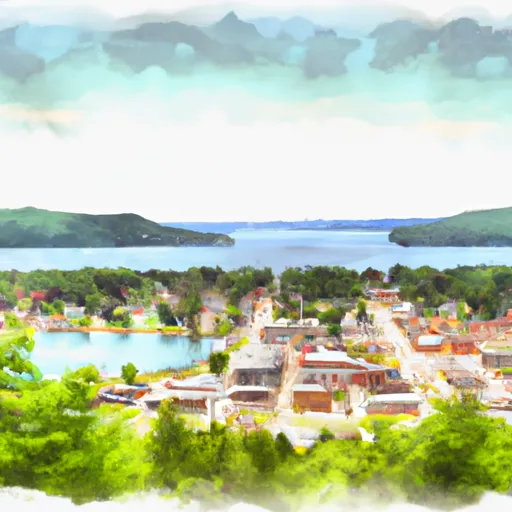-
 Snoflo Premium
Snoflo Premium
Get unlimited access to all our content
With no Ad interruptions! - Start Your Free Trial Login with existing account
Lake-George
Eden Index
Climate
6.4
•
Recreation
3.3
•
Community
•
Safeguard
3.7/10

Lake-George is a charming village nestled in Clare County, Michigan. The region experiences a continental climate with warm summers and cold winters. Summers are typically mild with average temperatures hovering around 80°F (26.7°C), while winters can be harsh with temperatures dropping to around 20°F (-6.7°C). Precipitation is evenly distributed throughout the year, with an annual average rainfall of about 30 inches (76 cm) and snowfall reaching up to 50 inches (127 cm) in the winter months.
Lake-George is renowned for its pristine hydrology constituents. The village is perched on the shores of the picturesque Lake George, a 1,370-acre (554-hectare) freshwater lake. The lake boasts crystal-clear waters and supports a diverse array of aquatic life, making it a haven for fishing enthusiasts. Anglers can try their luck at catching a variety of fish species, including bass, northern pike, walleye, and panfish.
Outdoor recreation opportunities abound in Lake-George. The lake offers excellent boating, kayaking, and canoeing opportunities, allowing visitors to explore its tranquil waters. Hiking enthusiasts can explore the scenic trails surrounding the lake, immersing themselves in the rustic beauty of the region. Additionally, birdwatchers can observe a plethora of bird species that inhabit the area, including bald eagles and various waterfowl. With its delightful climate, breathtaking hydrology constituents, and abundant recreational offerings, Lake-George is a perfect destination for nature lovers and adventure seekers alike.
What is the Eden Index?
The Snoflo Eden Index serves as a comprehensive rating system for regions, evaluating their desirability through a holistic assessment of climate health, outdoor recreation opportunities, and natural disaster risk, acknowledging the profound impact of these factors on livability and well-being.
Climate Health Indicator (CHI): 6.4
Lake-George receives approximately
827mm of rain per year,
with humidity levels near 81%
and air temperatures averaging around
7°C.
Lake-George has a plant hardyness factor of
5, meaning
plants and agriculture in this region thrive during a short period during spring and early summer. Most
plants will die off during the colder winter months.
By considering the ideal temperature range, reliable water supplies, clean air, and stable seasonal rain or snowpacks, the Climate Health Indicator (CHI) underscores the significance of a healthy climate as the foundation for quality living.
A healthy climate is paramount for ensuring a high quality of life and livability in a region, fostering both physical well-being and environmental harmony. This can be characterized by ideal temperatures, reliable access to water supplies, clean air, and consistent seasonal rain or snowpacks.
Weather Forecast
Streamflow Conditions
Northeastern Lake Michigan
Area Rivers
Northeastern Lake Michigan
Snowpack Depths
Northeastern Lake Michigan
Reservoir Storage Capacity
Northeastern Lake Michigan
Groundwater Levels
Recreational Opportunity Index (ROI): 3.3
The Recreational Opportunity Index (ROI) recognizes the value of outdoor recreational options, such as parks, hiking trails, camping sites, and fishing spots, while acknowledging that climate plays a pivotal role in ensuring the comfort and consistency of these experiences.
Access to outdoor recreational opportunities, encompassing activities such as parks, hiking, camping, and fishing, is crucial for overall well-being, and the climate plays a pivotal role in enabling and enhancing these experiences, ensuring that individuals can engage in nature-based activities comfortably and consistently.
Camping Areas
| Campground | Campsites | Reservations | Toilets | Showers | Elevation |
|---|---|---|---|---|---|
| Little Brevoort Lake (South) - State Forest | 12 | 651 ft | |||
| Little Brevoort Lake (North) - State Forest | 20 | 636 ft | |||
| Soldier Lake Rec Area | 43 | 908 ft | |||
| Brevort Lake | 84 | 632 ft | |||
| Cecil Lakeview City Park | None | 579 ft | |||
| Wilderness State Park | 250 | 594 ft | |||
| Petoskey State Park | 165 | 600 ft | |||
| Three Lakes | 28 | 877 ft | |||
| Trout Lake City Park | 83 | 830 ft | |||
| Lake Michigan | 34 | 601 ft |
Nearby Ski Areas
Catastrophe Safeguard Index (CSI):
The Catastrophe Safeguard Index (CSI) recognizes that natural disaster risk, encompassing floods, fires, hurricanes, and tornadoes, can drastically affect safety and the overall appeal of an area.
The level of natural disaster risk in a region significantly affects safety and the overall livability, with climate change amplifying these risks by potentially increasing the frequency and intensity of events like floods, fires, hurricanes, and tornadoes, thereby posing substantial challenges to community resilience and well-being.
Community Resilience Indicator (CRI):
The Community Resilience Indicator (CRI) recognizes that education, healthcare, and socioeconomics are crucial to the well-being of a region. The CRI acknowledges the profound impact of these elements on residents' overall quality of life. By evaluating educational resources, healthcare accessibility, and economic inclusivity, the index captures the essential aspects that contribute to a thriving community, fostering resident satisfaction, equity, and social cohesion.

